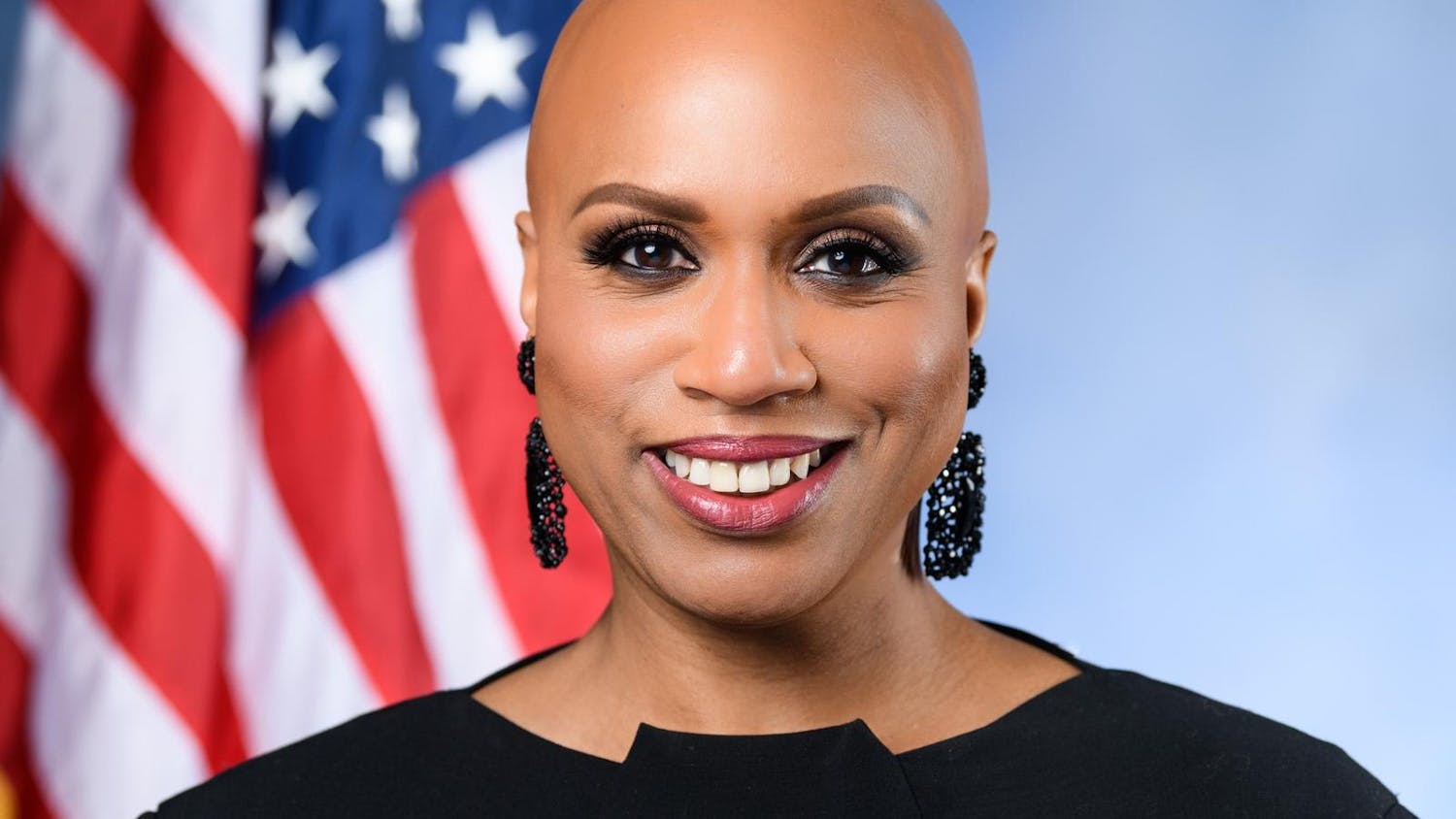The percentage of women in full-time professor positions in research-oriented economics departments is 8 to 13 percent, according to an Institute of Labor Economics study in 2018. The share of women academics in economics is slowly increasing, but senior and junior figures alike remain a minority in the profession.
Four women professors in the economics department spoke with The Herald about their journeys into academia, their experiences navigating gender dynamics and what equity might look like for the field.
Carving out space in the field
Rachel Friedberg, distinguished senior lecturer in economics and department director of undergraduate studies, is a recognizable face to undergraduate students taking the introductory economics course, ECON 0110: “Principles of Economics.” Around half of the undergraduate body takes the class before graduating, Friedberg said.
Friedberg was “very drawn to the academic life” from the start, which may have been influenced by her growing up in a college town, she said. “I discovered that my real love in economics was in teaching,” which led her to switch from an assistant professor to a lecturer in the department.
As the primary instructor for Brown’s gateway course into economics for over a decade, “I love having the opportunity to be the person who can get people excited about economics,” especially those “who don’t think it’s going to be interesting,” she said.
“I also really appreciate (having) the platform as a woman, so that people's first experience of the field is having a woman explain to them so that (it) doesn't enter their minds that this (would) be something that's meant for guys,” she said. Friedberg hopes women taking her class will not be dissuaded from pursuing graduate school, where she was the only woman in her class herself. “I felt it was so silly that it should be so male,” she recalled.
Professor and Chair of Economics Anna Aizer joined Friedberg as the second woman in the economics department in 2003. During her time at Brown, she became the first tenured woman in the economics department and the first female chair of the department, a position she holds today.
Aizer’s path to academia was unconventional: She studied history while an undergraduate student, and first became interested in public health economics after graduation through working on government policy evaluation. While in graduate school at UCLA, Aizer’s advisor Janet Currie served as an “incredible role model” on “how to navigate (gender issues in the profession) at a very early stage in my career,” she said.
She found the same care and mentorship at Brown; Andrew Foster, the department chair at the time, was “extremely supportive” when Aizer was having her first child shortly after arriving at Brown. “It's enormously important to have a chair who is supportive of junior faculty,” Aizer said.
Bryce Steinberg, IJC assistant professor of economics and international and public affairs, recalled taking a class taught by Aizer after the summer that helped cement her decision to pursue academia. Steinberg originally planned to pursue a career in law until an experience during her sophomore year summer working for David Weil, James and Merryl Tisch professor of economics, exposed her to academia as a viable career.
Coming from a working class background with only one parent attending college, Steinberg arrived with the mindset that the goal of attending an elite university was attaining a lucrative job, she said. During her summer research experience, she had the opportunity to sit in on an economics conference for the first time and was “totally blown away that this was an option for a person’s job,” Steinberg said.
Steinberg also credited Emily Oster, professor of economics and international and public affairs, as a more seasoned mentor figure, whom she was able to observe and learn from. “There’s this very strong camaraderie amongst women in economics because there aren't that many of us,” she said.
Gendered hostility in economics
“Women received 12 percent more questions than men (in economics seminars), and they were more likely to get questions that were patronizing or hostile.” Covered in The New York Times, this finding came from a study called “Gender and the Dynamics of Economics Seminars,” which was published this February by the National Bureau of Economics Research. The study is the first to quantify any differences in how female and male-identifying presenters in economics seminars are treated by the audience.
Aizer, Friedberg and Steinberg agreed that economics seminars can be “combative” spaces, as Friedberg described. The questions and constructive criticisms that presenters receive are important to the field: “Only work that can really withstand tests and criticism will survive and become part of our body of knowledge,” Friedberg said.
But questioning beyond a certain extent can be unproductive, Aizer said. During a recent virtual seminar, Aizer experienced aggressive questioning from the male host, which was “a waste of his time and my time, and all the other people who were at the seminar,” she said. Some of the attendees emailed Aizer afterwards apologizing on behalf of the questioner.
Brown’s economics department implemented rules for seminars two years ago to help prevent similar situations, she said. The presenter is allowed the first ten to fifteen minutes to speak uninterrupted, and the seminar organizer can ask a person to refrain from questions if they are “badgering” the speaker.
“In this case, the person who’s doing the badgering was the seminar organizer,” as well as a Nobel Laureate, Aizer added. “Had I been junior (in the field), that would’ve been really devastating for me.”
During a talk at the University of Chicago, Steinberg recalled being “shouted down on the first couple of slides” before having the opportunity to explain her paper’s topic. Though it’s difficult to explicitly attribute the treatment to her gender, “I definitely believe that there's an enormous amount of implicit bias that drives a lot of this behavior in ways that people don't understand,” Steinberg said.
A changing landscape: the future of the field
“There’s a lot of push for female representation, but I have noticed that things are different when women are actually doing it,” Steinberg said. Aizer and Steinberg, who were on the department’s hiring committee this year, were able to extend offers to more women than ever before.
Amy Handlan, a doctoral candidate in economics at the University of Minnesota, is one of two women who will be joining the department this summer as an assistant professor. Handlan specializes in macroeconomics, a subfield that she has explored in greater depth at the University of Minnesota, which has a partnership with the Federal Reserve Bank of Minneapolis.
Macroeconomics is generally understood to be a heavily male dominated area within economics, Handlan said. Knowing about these gender dynamics was not a deterring factor in pursuing her career, though Handlan has experienced “additional time costs” as a woman that she “did not expect to be as much of a balancing act as it is.” Minorities in the field in general can be asked more often to do tasks that do not directly benefit their career, or “invisible service,” Handlan said.
These requests, such as speaking to undergraduate students interested in studying economics, are asked less often of her male counterparts in her doctoral program. While visible representation of minorities helps encourage more diverse students to major in economics, “this is time that is spent taking away from time that I could have been doing research” or other activities in the best interest of her professional development, Handlan said.
If departments are interested in addressing discrimination in the profession, soliciting feedback from a variety of different people and identities is important, Handlan said.
The NBER study “had enough women presenting in seminars that they could do a study on women presenting in seminars; there weren't enough economists of other minority groups to even (study them),” she said.
“A lot of work has been done on (and) is being done on gender; I think there's a long way to go on race and ethnicity,” Friedberg agreed.
The problem of underrepresentation in the department occurs “through the whole pipeline,” she said. For instance, hiring more diverse faculty may be difficult for Brown’s department to address since it ties back to underrepresentation in doctoral programs, Friedberg said.
At the same time, having a diverse faculty enables the department to offer classes that might appeal to a broader and more diverse set of students, Aizer said, who may later enter doctoral programs. “We can't just hope that women will pursue economics; we actually have to do the work of convincing them,” Aizer said.
“I’m optimistic that (the) profession is moving towards a direction that it should, where problems shouldn’t be hidden but … brought out into the open (so) that we can address them,” Handlan said.
“It’s been a real privilege to watch the field and the department grow in that way,” Friedberg said.
Correction: A previous version of this article stated that Amy Handlan will join the University as an associate professor this summer. In fact, she will join as an assistant professor. The Herald regrets the error.

ADVERTISEMENT




